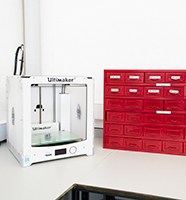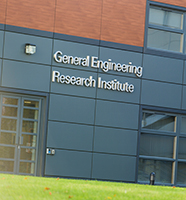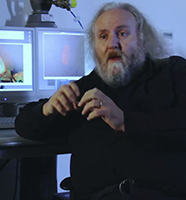About the General Engineering Research Institute
Although GERI houses a variety of specialist teams, the Institute's research community work together to deliver engineering-based solutions for industry.
Consequently, the majority of GERI’s research is user-driven and the Institute’s business links range across the whole supply chain, from SMEs to international industry.
Collaboration is central to GERI’s work and the Institute works with individual researchers from institutes and companies in Europe, Asia and North America. Visits from national and international scientists, students and industrialists are also welcomed. In addition to this, GERI collaborates with several major industrial and medical partners, including the Christie Hospital NHS Trust, Rolls-Royce and Airbus, as well as a number of patents.
The history of GERI
-
1970
The Coherent and Electro-Optics Research Group (CEORG) and the Advanced Manufacturing Technology Research Laboratory (AMTReL) were established in the early 1970s.
-
2002
In 2002 the Coherent and Electro-Optics Research Group and the Advanced Manufacturing Technology Research Laboratory merged and GERI was formed, amalgamating several existing research groups from the School of Engineering.
-
2003
GERI’s continually evolving research interests led to the establishment of the Bio-Engineering Group - an innovative collaboration between CEORG/PiE researchers and staff from the School of Pharmacy and Biomolecular Sciences.
-
2008
In 2008, two further groups were created – the Electronic and Ultrasonic Engineering Research Group (EUE) and the Photonics in Engineering Research Group (PiE). The creation of these groups formalised 30 years of research activity and experience.
-
2016
In 2016, GERI has two areas of expertise: Drone Technologies and Sensing (DTS) research group and the Advanced Manufacturing Technologies (AMT) research group.





